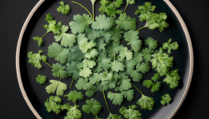Animal-free eating is now mainstream in the UK, but it can still be a challenge in other countries, writes Liz Dodd in the Guardian.
ritish veganism long ago moved from grain sacks and carob bars at the back of health-food shops into the mainstream. But animal-free eating can still be a challenge abroad, when the language barrier gets in the way of attempts to agonise about fish sauce. With summer holidays looming, many vegan converts face weeks far from Tofurkey and beyond the reach of lifestyle bloggers, a challenge that is at least as great as learning to love cheese made out of beans.
As a travel writer currently cycling around the world, and a vegan of 16 years, I’ve learned that there’s no need to worry about your next meal when travelling as a vegan. Many countries – particularly in Asia – have a food culture that celebrates vegetarian food, and dishes that can be easily adapted for vegans. There are a wealth of resources to help you track down vegan restaurants all over the world. From the Gili Islands to Ghana, here are some tips to help you stay vegan abroad.
In mainland Europe – where a bit of bacon is considered seasoning – and in Scandinavia, listings website HappyCow comes into its own. Featuring restaurants in more than 100 countries, it gives you the option of filtering for vegan, vegetarian and vegetarian-friendly offerings and sorting by price and distance. Community reviews are usually spot on, but listings can be out of date, so it’s worth calling ahead. Restaurants are often proposed by locals, too, which means you’ll find somewhere off the beaten track. Another option is to search TripAdvisor’s restaurant listings for “vegan”. This combs both keywords and tags, which can sometimes uncover a restaurant that has turned out vegan versions of dishes before, even if they aren’t advertised on the menu.
Take it to the streets
Night markets and street-food vendors can be a great option for the travelling vegan because you can see everything that’s going into your meal. Look out for rice balls in Kuala Lumpur; tempeh (best described as wholegrain tofu) on sticks in Indonesia; churros (doughnuts) in Mexico (check that they aren’t made with egg; many authentic recipes don’t call for it); fried dough on the streets of Rio de Janiero and noodle carts throughout Asia, where you can select toppings from what’s on display.
Join the movement
Throughout the world, restaurants run by the Hare Krishna movement, often called Govindas, serve up cheap, wholesome vegetarian curries that are usually vegan. The branch in London’s Soho is an institution. You can find a full directory of restaurants on the Hare Krishna website. Other places to look out for include Loving Hut, a vegan restaurant chain that has outposts in countries including Paraguay, Benin, Congo and Ethiopia.
Go to church (or temple)
Canteens attached to temples in India and China are usually strictly vegetarian and are experts at creative vegan alternatives. Buddhist temples in China serve up an amazing array of mock meat – usually made from seitan, or wheat gluten – while Hindu, Jain and Buddhist temples in India, such as the Hindu Meenakshi temple in Madurai, India, have canteens that serve vegetarian food, much of which is vegan (check it hasn’t been fried in ghee, which is clarified butter). Ashrams also offer all-vegetarian food: Sivananda Yoga Vedanta Dhanwantari ashram, in Kerala, in south India, served some of the best vegan food I’ve ever had – moreish dals and drumstick curries. Throughout India, look for restaurant signs saying “pure vegetarian”.
Do it yourself
Desperate times and a tight budget can sometimes mean that cooking for yourself is the best option. Build up fruit bowls from local markets, bearing in mind that in some countries you’ll need to stick to fruit that’s prepared in front of you – such as watermelon – or that you can peel yourself to avoid contaminated tap water. Hire barbecue pits in Vietnam and Cambodia, as local families do, and cook your own feast on the beach.
Learn the language
Vegan isn’t as commonly understood a word as vegetarian, so have someone else write out phrases for no meat, dairy, eggs and fish on a flashcard. Use pictures if you have to. In southern China, a barman wrote the Mandarin word for “Buddhist nun” on a card for me – because many Buddhists in China avoid animal products – and it worked like a charm.
Expert tips
Asia
Jackie Kearney, chef, 2011 MasterChef finalist and author of Vegan Street Food
India overwhelmed us with delicious vegan food. Try Indian pancakes known as dosa or their thicker cousin, oothapam, for plant-powered perfection on a plate. Ask for pad thai jay in Thailand, the veggie version of their classic stir-fried noodle dish, and it should omit any seafood additions such as fish sauce and the egg. In much of Asia, egg is perceived as a meat byproduct. In India, eggs, curd and paneer (Indian cheese) are usually found on the “non-veg” menu. In south-east Asia, dairy is virtually non-existent on all menus. Student food spots are great places for good value and nutritious vegan food. Try green jackfruit curry, an Indonesian student staple. In Thailand and Laos, try stir-fried holy basil with aubergine (pad ka prao), vegetable fried rice and noodle soups.
Latin America
Sean O’Callaghan, blogger, event planner and activist
The past five years have heralded an unstoppable plant-based food revolution as Mexico City overflows with 100% vegan bakeries, grocery stores, cafes, festivals, restaurants and multiple home delivery services. My favourite accidentally vegan Mexican delights? Fried tortilla chips with pico de gallo or street-corner stands selling fresh fruit dusted with chilli. Mexico and its capital are full of culinary delights for vegan travellers. Todo Vegano is an invaluable guide to finding everything plant-based in Mexico (and Latin America).
The Mediterranean
Fabio Stefàno, owner of Fed By Water, a vegan Italian restaurant in east London
It seems the biggest vegetarian community in Europe is in Italy. Plenty of dishes are born vegan, but it’s crucial to remember to specify no cheese. Spaghetti aglio olio e peperoncino (spaghetti with olive oil, garlic and chilli) is a vegan dish, as is marinara pizza (tomato and garlic), as long as the dough is made with olive oil and not lard. Pasta e ceci (chickpea pasta) is another typical vegan main together with other sauces such as pomodoro, arrabbiata and so many more. Salads and veggies of all kind are available everywhere cooked in different ways.















